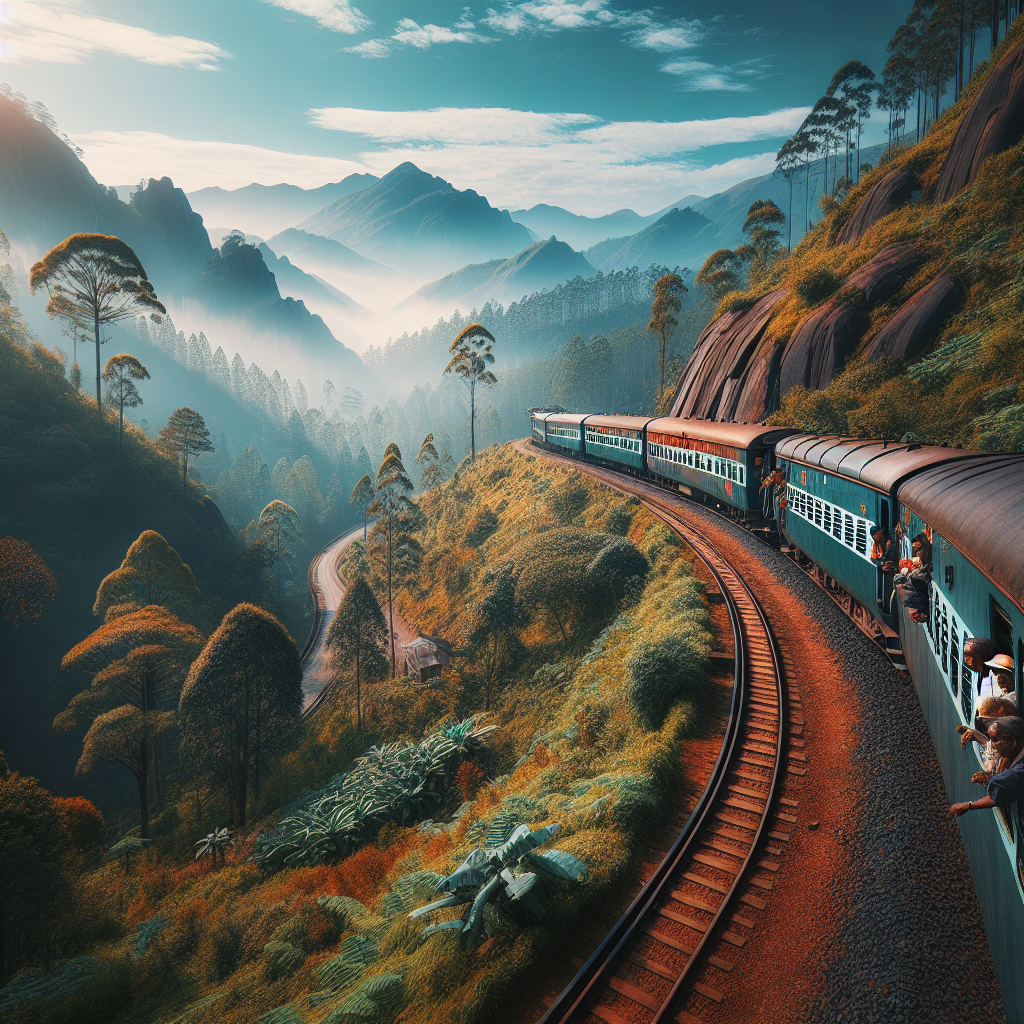The Slow Train to Heaven: Exploring the Nilgiri Mountain …
1. Introduction to the Nilgiri Mountain Railway
The Nilgiri Mountain Railway (NMR) is one of the few preserved mountain railways in India, and it has earned the title of a UNESCO World Heritage Site. Opened in the early 20th century, this narrow-gauge railway connects Mettupalayam to Ooty (Udhagamandalam) and is renowned for its breathtaking views of the Nilgiri Hills. The railway covers a distance of 46 kilometers and offers a unique travel experience characterized by steep gradients, scenic vistas, and historical significance.
2. Historical Background
The construction of the railway began in 1891, primarily to facilitate the movement of tea and other goods from the hills to the plains. The engineering marvel presented unique challenges, including steep inclines and sharp curves. The first segment from Mettupalayam to Coonoor was completed by 1899, and it took almost a decade for the line to reach Ooty by 1908. The introduction of the rack and pinion system in 1924 allowed the trains to tackle the steep gradient (up to 1 in 12) in certain sections, making it both a remarkable civil engineering achievement and a vital link in the region’s transportation network.
3. The Journey Experience
Traveling on the Nilgiri Mountain Railway is an experience that transcends mere transportation. The journey takes about four hours from Mettupalayam to Ooty, during which passengers can enjoy an array of sights. The train navigates lush forests, tea plantations, and charming little stations such as Coonoor and Ketti. The ride features several tunnels, bridges, and the imposing views of the surrounding hills, making it a favorite among nature lovers and photographers alike.
4. Scenic Highlights
The NMR is celebrated for its scenic beauty. Passengers can expect stunning views over valleys, mountain ranges, and picturesque landscapes. The highest point of the journey is at Ooty, which lies 2,224 meters above sea level. Key highlights include the famous Coonoor tea gardens, the serene landscapes of Ketti Valley, and the beautiful Nilgiri Biosphere Reserve. Statistics indicate that the railway crosses over 250 bridges and passes through more than 16 tunnels, demonstrating the extensive engineering involved in this remarkable route.
5. The Unique Train
The train itself is a vintage marvel. The locomotives used on the NMR are historic steam engines, some of which date back to the early 20th century. The delightful sound of the whistle and the sight of steam billowing as the train climbs steep gradients make for an unforgettable auditory and visual experience. The charming carriages, often filled with tourists and locals alike, add to the ambience, with large windows that invite nature in.
6. Environmental Significance
The Nilgiri Mountain Railway operates within the Nilgiri Biosphere Reserve, which is home to diverse flora and fauna. The railway’s continuous operation brings attention to environmental conservation, as it provides a sustainable mode of transport for tourists. There’s a marked reduction in carbon emissions when compared to road transport, making it a more eco-friendly option in the region. Additionally, the railway plays a role in preserving the cultural heritage of the Nilgiris, as many local tribes depend on the transport system for their livelihoods.
7. Connectivity and Accessibility
For travelers wishing to experience the Nilgiri Mountain Railway, access is generally via Mettupalayam, which is well-connected by road and rail. The nearest major city is Coimbatore, located about 45 kilometers away. Regular train services from Coimbatore to Mettupalayam make it easy for tourists to embark on this unforgettable journey. It’s advisable to book tickets in advance, especially during peak tourist seasons, as the NMR often experiences high demand.
8. The Cultural Impact
Over the years, the NMR has become a popular subject in Indian cinema, with various films showcasing its picturesque route and the enchanting beauty of the Nilgiris. Scenes of lovers enamored by the train ride or family trips to Ooty have created a cultural nostalgia around the railway. It also contributes to local tourism, helping generate income for the communities surrounding the railway, from handicrafts to local cuisines.
9. Conclusion: A Journey Worth Taking
The Nilgiri Mountain Railway represents much more than a means of transportation; it’s a journey through history, nature, and culture. From the historical significance and breathtaking views to its role in sustainable tourism, the NMR offers an unparalleled experience to anyone seeking to explore the beauty of Tamil Nadu’s hills. With reports of over 300,000 passengers annually, there’s no denying the railway’s impact on tourism and local economies. A ride on the NMR is not just a trip; it’s an emotional journey that connects you to the past while revealing the timeless beauty of the Nilgiri hills.
The Slow Train to Heaven aptly captures the essence of this remarkable journey, inviting all to step aboard and experience the magic of the Nilgiri Mountain Railway.




Post Comment